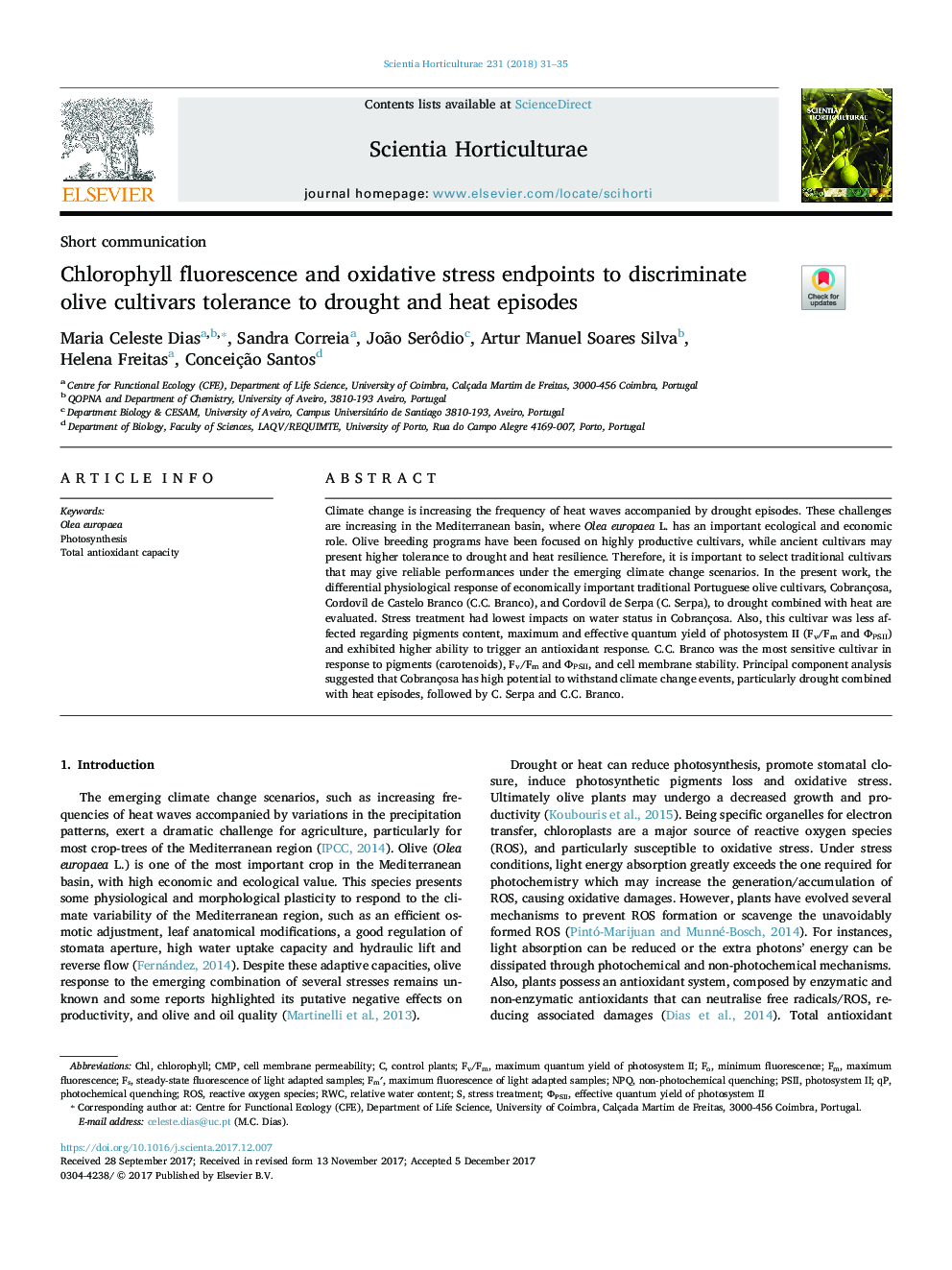| Article ID | Journal | Published Year | Pages | File Type |
|---|---|---|---|---|
| 8892960 | Scientia Horticulturae | 2018 | 5 Pages |
Abstract
Climate change is increasing the frequency of heat waves accompanied by drought episodes. These challenges are increasing in the Mediterranean basin, where Olea europaea L. has an important ecological and economic role. Olive breeding programs have been focused on highly productive cultivars, while ancient cultivars may present higher tolerance to drought and heat resilience. Therefore, it is important to select traditional cultivars that may give reliable performances under the emerging climate change scenarios. In the present work, the differential physiological response of economically important traditional Portuguese olive cultivars, Cobrançosa, Cordovil de Castelo Branco (C.C. Branco), and Cordovil de Serpa (C. Serpa), to drought combined with heat are evaluated. Stress treatment had lowest impacts on water status in Cobrançosa. Also, this cultivar was less affected regarding pigments content, maximum and effective quantum yield of photosystem II (Fv/Fm and ΦPSII) and exhibited higher ability to trigger an antioxidant response. C.C. Branco was the most sensitive cultivar in response to pigments (carotenoids), Fv/Fm and ΦPSII, and cell membrane stability. Principal component analysis suggested that Cobrançosa has high potential to withstand climate change events, particularly drought combined with heat episodes, followed by C. Serpa and C.C. Branco.
Keywords
Stress treatmentmaximum quantum yield of photosystem IINPQCMPΦPSIIOlea europaeaPSIIChlRWCFm′Fv/FmROSminimum fluorescencemaximum fluorescenceNon-photochemical quenchingPhotochemical quenchingChlorophyllTotal antioxidant capacityPhotosynthesisPhotosystem IIRelative water contentCell membrane permeabilityReactive oxygen speciescontrol plants
Related Topics
Life Sciences
Agricultural and Biological Sciences
Horticulture
Authors
Maria Celeste Dias, Sandra Correia, João Serôdio, Artur Manuel Soares Silva, Helena Freitas, Conceição Santos,
